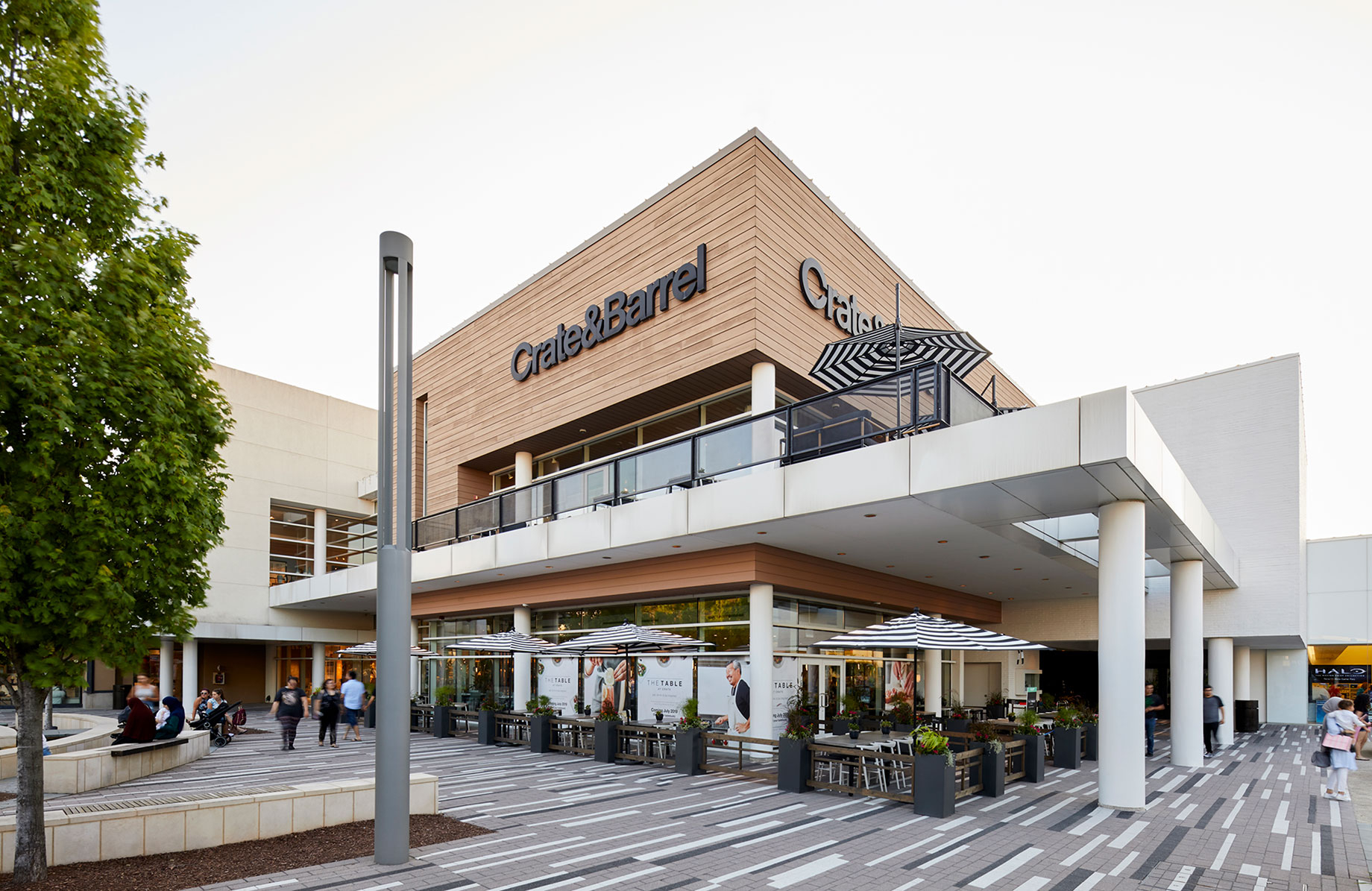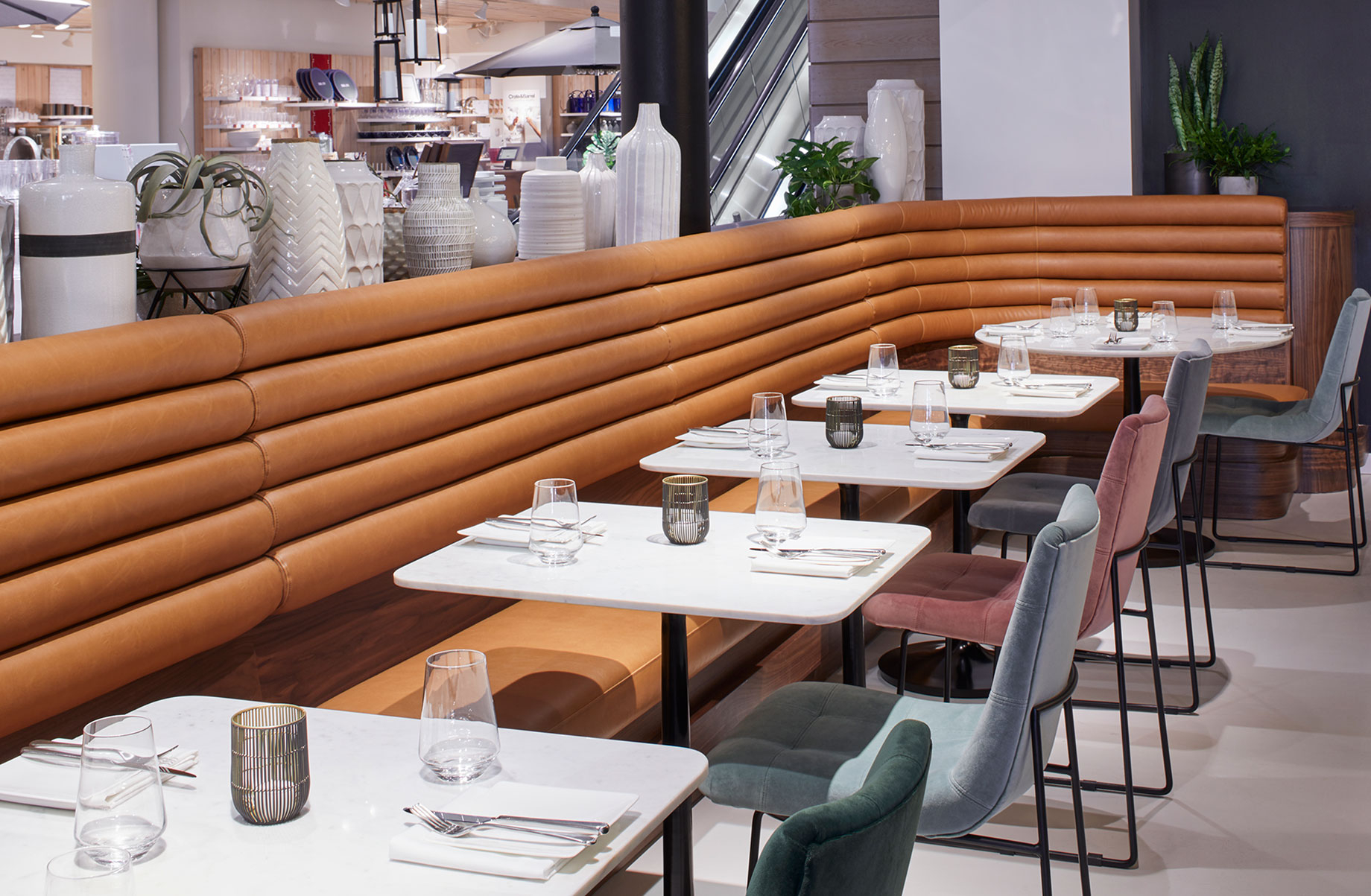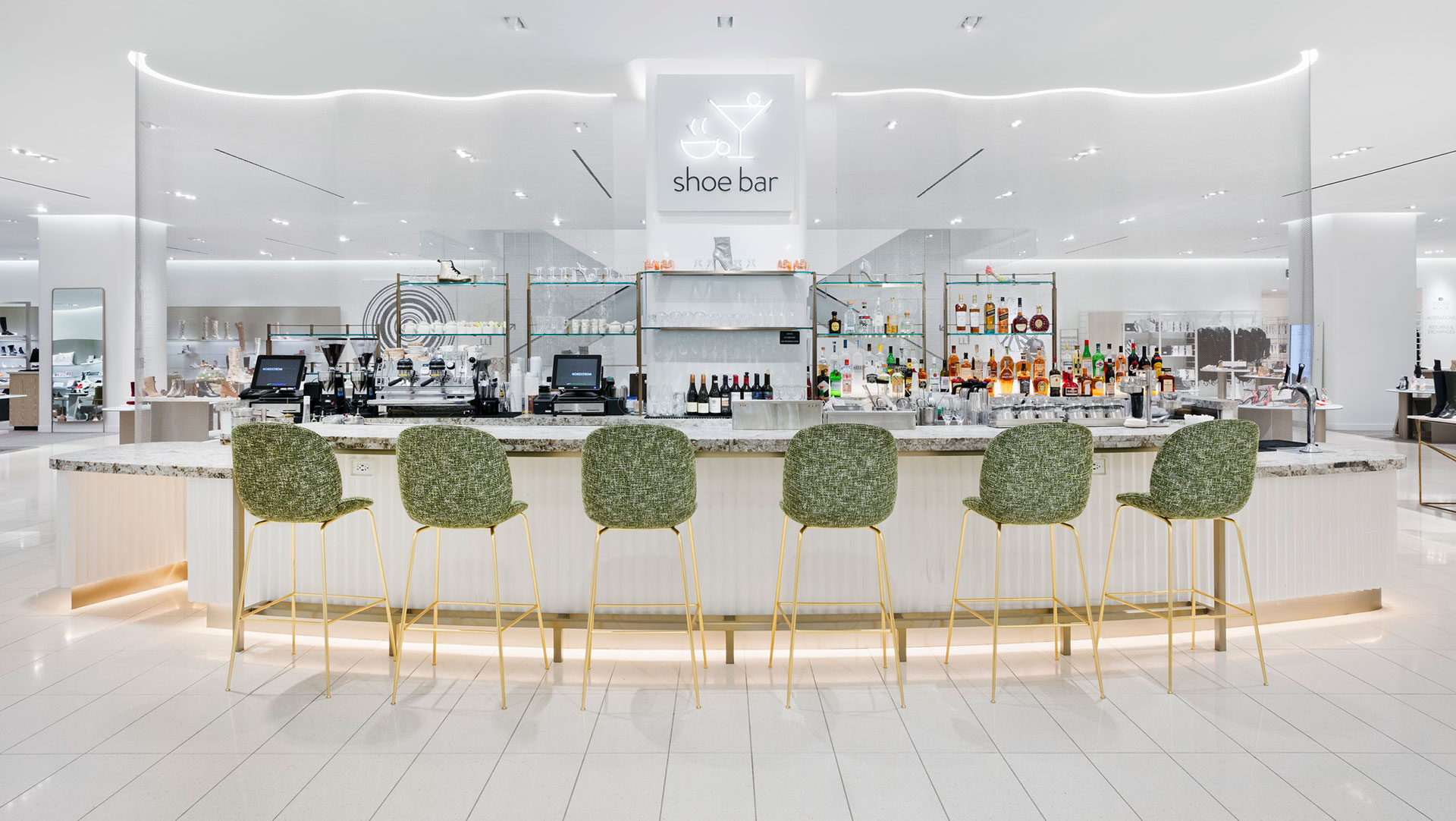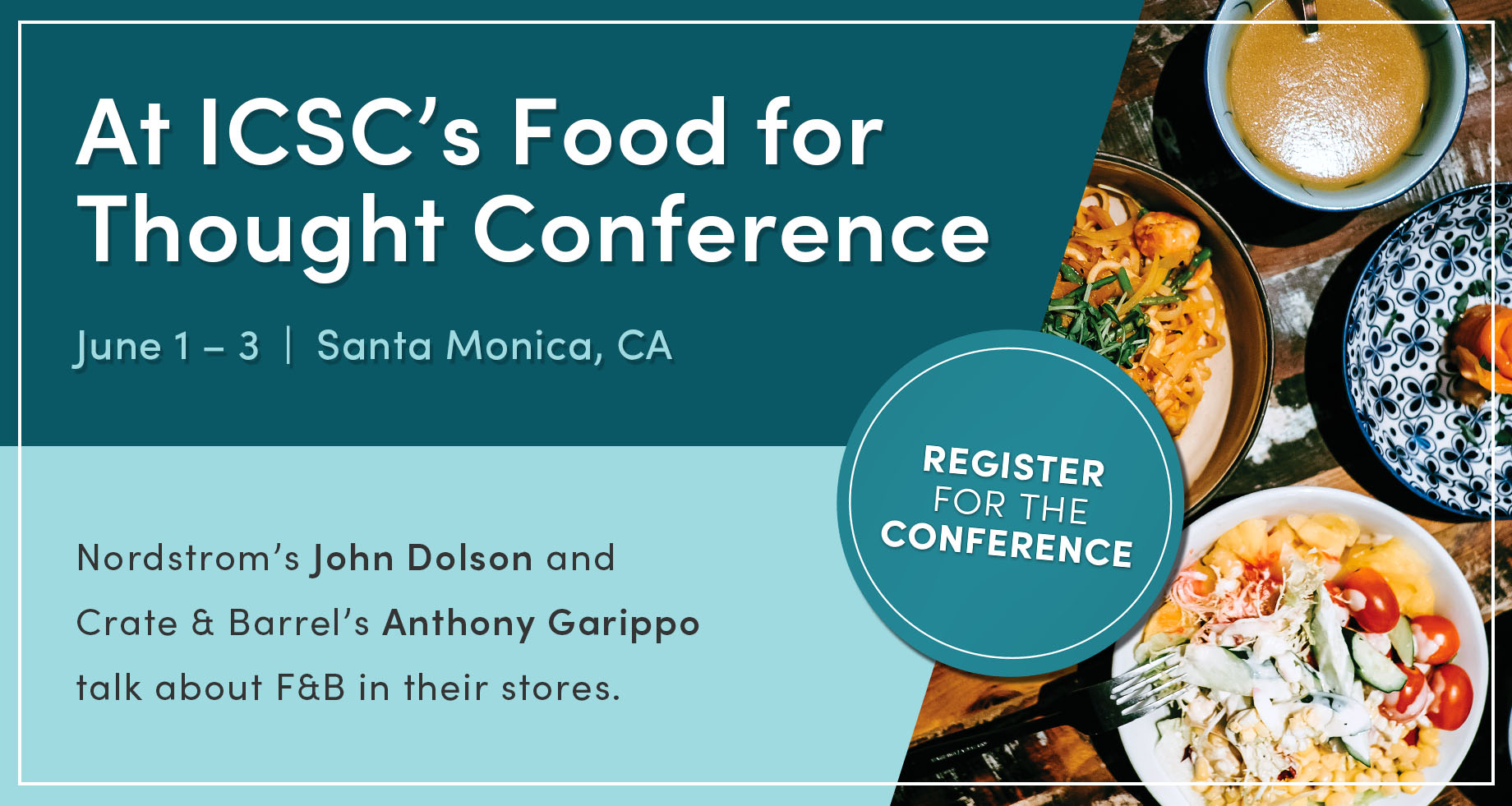Everyone in the Minneapolis suburb of Edina is talking about a showpiece at the new, 60,000-square-foot RH store there. The talk of the town is not of the crystal chandeliers or marble statues, though; it is the RH Rooftop Restaurant.

The Table at Crate in Oak Brook, Ill.
The glass-enclosed restaurant adds a wow factor fitting of a flagship store, complete with bubbling fountains and landscaping that create a park-like space on the store’s third floor. The company has opened similar RH Rooftop restaurants in Columbus, Ohio; New York City; and West Palm Beach, Fla.
These restaurants create a narrative with RH’s merchandise and allow guests to enjoy the setting, whether they are shopping or socializing, says Anjee Solanki, national director of U.S. retail services for Colliers International. “Creating an aspirational experience may result in a new customer or stronger brand loyalty for existing customers,” Solanki said.
“It’s a space that blurs the lines between residential and retail, indoors and outdoors, home and hospitality — an experience that activates all of the senses and can’t be replicated online,” said RH Chairman and CEO Gary Friedman: The store offers a separate Wine & Barista Bar so shoppers can stroll through the store with glasses of wine or cups of coffee. The retailer also has said that RH Minneapolis represents a prototype for the future.
RH is just one example of retailers leveraging food-and-beverage concepts to elevate store experiences, build brand loyalty, draw traffic and increase dwell time within stores. “We see it as a trend of broadening the definition of hospitality elements across all retail platforms to create more of an integrated retail experience,” said Ben Freeman, vice president of development at Brookfield Properties. Crate & Barrel introduced its first restaurant — The Table at Crate — last July at its flagship in Brookfield’s Oakbrook Center, in Oak Brook, Ill.

The Table at Crate features products sold in Crate & Barrel stores, from table settings to velvet chairs
What’s new this go-round
In-store restaurants are hardly new. Department stores long have offered full-service restaurants, while such discounters or big-box stores as Costco, IKEA, Target and Walmart offer cafés, coffee bars and fast food. Even small-town retailers like Woolworth’s once operated soda fountains and lunch counters. “We’re seeing a return to concepts and ideas that were more prevalent 50 and 60 years ago,” said Michael Smith, director of real estate at Streetsense, a design and strategy firm specializing in retail, restaurant, hospitality and real estate.
Solanki cites IKEA founder Ingvar Kamprad, who once stated, “It’s difficult to do business with someone on an empty stomach.” Now retailers increasingly look to transform shopping trips into memorable experiences and social events, with tea, coffee or cocktails, she says. To that end, Nordstrom’s new flagship in New York City features seven bars and restaurants, including Shoe Bar, which serves cocktails and specialty coffee drinks in the middle of the women’s shoe department.
What is new from the likes of RH and Crate & Barrel is the showcasing of merchandise by integrating products into the restaurant decor, furnishings and accessories. “The ability to have a product exhibited in a service environment and then offer an integrated experience creates a differentiating, compelling way to reach shoppers,” said Freeman. Home-furnishings retailers are a natural fit for this type of immersive experience. The Table at Crate features products sold in Crate & Barrel stores, including table settings, velvet chairs, marble dining tables and bar carts.
“We eat out a lot more often than we shop,” said Smith, “so if Crate & Barrel can get me in the store twice a month or once every two months to visit their restaurant, it might be more often than I would have [gone] otherwise just to shop.” The more those retailers can get people in the door, he says, the more likely they are to buy something, as well as to form brand loyalty.
Experience and loyalty
Even smaller-format retailers are experimenting with food-and-beverage components. The reason has less to do with profit margin and more to do with creating experiences and differentiating from competitors, notes Smith. Lululemon Athletica opened its first restaurant last July at its 20,000-square-foot flagship in Chicago’s Lincoln Park neighborhood; Fuel Space, as the concept is called, serves healthy fare: smoothies, salads, veggie burgers and the like, along with beer and wine. Clothing retailer Club Monaco is experimenting with a rotation of restaurants at one of its New York City stores. “In the spirit of experience, having that constant change means there is a continued stream of freshness and something new to see,” said Smith.
Food-and-beverage also fosters loyalty and community in a way that traditional retail does not, Smith says. Across the country, neighborhood bike shops and running shops are adding on coffee bars where customers can socialize: There is the Angry Catfish Bicycle Shop & Coffee Bar, in Minneapolis, for example, and Double Shot Cyclery, in Gunnison, Colo.
Restaurants tend to bring in more people, which creates more energy and activity in stores seven days a week. If done well, restaurants also could drive revenue for the retailer, says Solanki. “Not everyone will splurge on a high-cost chandelier,” she said, “but they will for lunch, dinner and drinks.”

Nordstrom’s New York City flagship includes seven bars and restaurants, including Shoe Bar
Testing phase
It is important to note that retailers are experimenting with food-and-beverage concepts on a limited scale to get a feel for what does work and what does not. The decision to roll a prototype out more broadly to a portfolio of stores is still a process, says Smith. Barnes & Noble opened its first Barnes & Noble Kitchen in 2016. The company has four units now — in Edina, Minn.; Folsom, Calif.; Plano, Texas; and Scarsdale, N.Y. — but has cited no plans to expand the full-service restaurants any further.
Additional examples of retailers opening full-service restaurants are limited, however. In the apparel sector, Tommy Bahama and Ralph Lauren have been active in restaurants for years. Ralph Lauren has said that it views the culinary arts as a “natural extension” of its brand. The company’s restaurants include The Polo Bar, in New York City; RL Restaurant, in Chicago; Ralph’s Coffee & Bar, in London; and Ralph’s, in Paris. Ralph’s Coffee shops operate in New York City, Hong Kong and Tokyo. “We believe that retailers will continue to innovate to offer compelling experiences that reflect their brand, product and service,” said Freeman. “All that effort to engage in a differentiated, visceral interaction — whether it is a restaurant, wine bar, coffee, hospitality, classes, events, et cetera — is aimed at reaching shoppers and offers an ability to lift the brand in an aspirational way.”
Brookfield supports retail tenants innovating with food-and-beverage, whether by extending leases, co-investing in tenant-improvement dollars or helping tenants work through planning and zoning issues, notes Freeman. “At the end of the day,” he said, “the real reason retailers are doing it is to heighten frequency and quantity of traffic and lengthen dwell time, and those are goals that all landlords are going to get behind.”
By Beth Mattson-Teig
Contributor, Commerce + Communities Today



